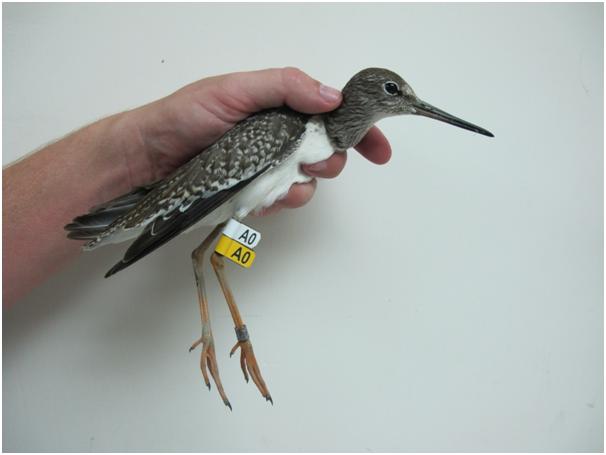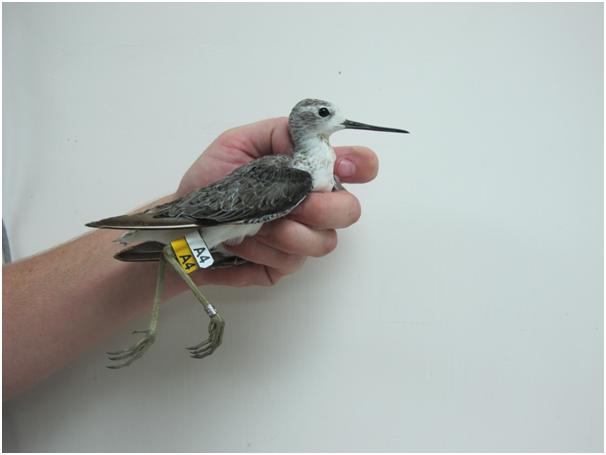Hong Kong engraved leg flags 香港號碼足旗
Hong Kong leg flags (using the colour combination White over Yellow) have been used for about 10 years. In this time, we have received some useful information about the movement of waders from Hong Kong due to resightings of birds here and overseas.
Because all waders from Hong Kong use the same flag combination, however, it has not previously been possible to recognise individual birds in the field. This limits the potential information which can be gained about the movements of individual birds and the duration for which an individual remains in Hong Kong. For example, we still do not know whether Marsh Sandpiper individuals remain in Hong Kong all winter or whether there is passage through Hong Kong, despite the fact that good numbers of this species have been flagged.
During this summer, the Hong Kong Ringing Group (HKRG) has obtained some engraved leg flags. These will allow individual birds to be recognised, so that we can gain this additional information. Engraved leg flags like these have been used successfully elsewhere for several years, and some Australian birds with engraved flags have been resighted in Hong Kong.
Last night, the HKRG was able to trap waders at Mai Po and we have fitted the first of the Hong Kong engraved leg flags. So far, 39 birds have been ringed: 22 Common Redshank, 9 Marsh Sandpiper, 5 Common Greenshank, 2 Greater Sand Plover and 1 Common Sandpiper. As usual,all have been fitted with the Hong Kong combination of White over Yellow. Both flags are engraved with a single letter followed by a single number (e.g. A1, B2, etc.) - the combination is the same on both flags. Photos are attached for Common Redshank, Common Greenshank and Marsh Sandpiper.
If anyone is at Mai Po over the coming weeks and months, I would like you to look out for these waders (and for any waders with leg flags). You can report them on the website, or by contacting me directly (jallcock @asiaecol. com.hk) All reports will be useful to gain a pattern of the birds behaviour in Hong Kong, and to see how long birds stay in this area. We hope that there will also be sightings from overseas. We plan to continue trapping over the course of the autumn and winter, so expect to see more of these birds (hopefully including more species) turning up in coming months.
As always, thank you to WWF-HK and Mai Po staff for their help with managing the reserve and giving permission for us to visit the site to conduct this research.
Attachment
-
 CRedshank.jpg
(20.46 KB)
CRedshank.jpg
(20.46 KB)
-
27/08/2010 14:13

-
 CGreenshank.jpg
(17.07 KB)
CGreenshank.jpg
(17.07 KB)
-
27/08/2010 14:13

-
 MSandpiper.jpg
(17.42 KB)
MSandpiper.jpg
(17.42 KB)
-
27/08/2010 14:13



